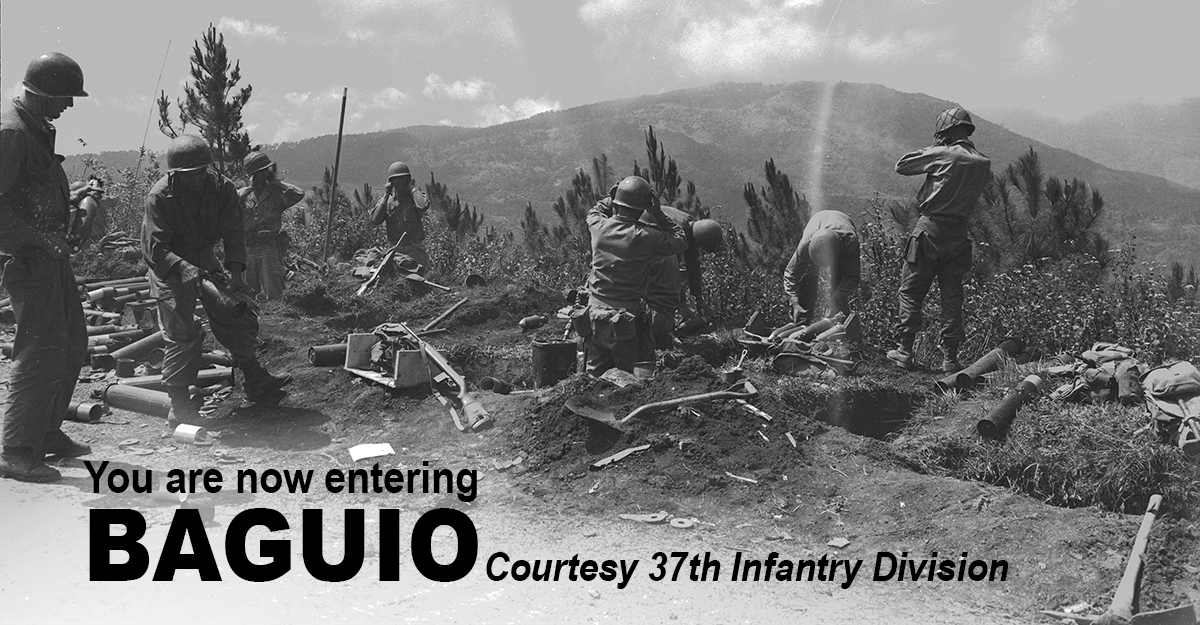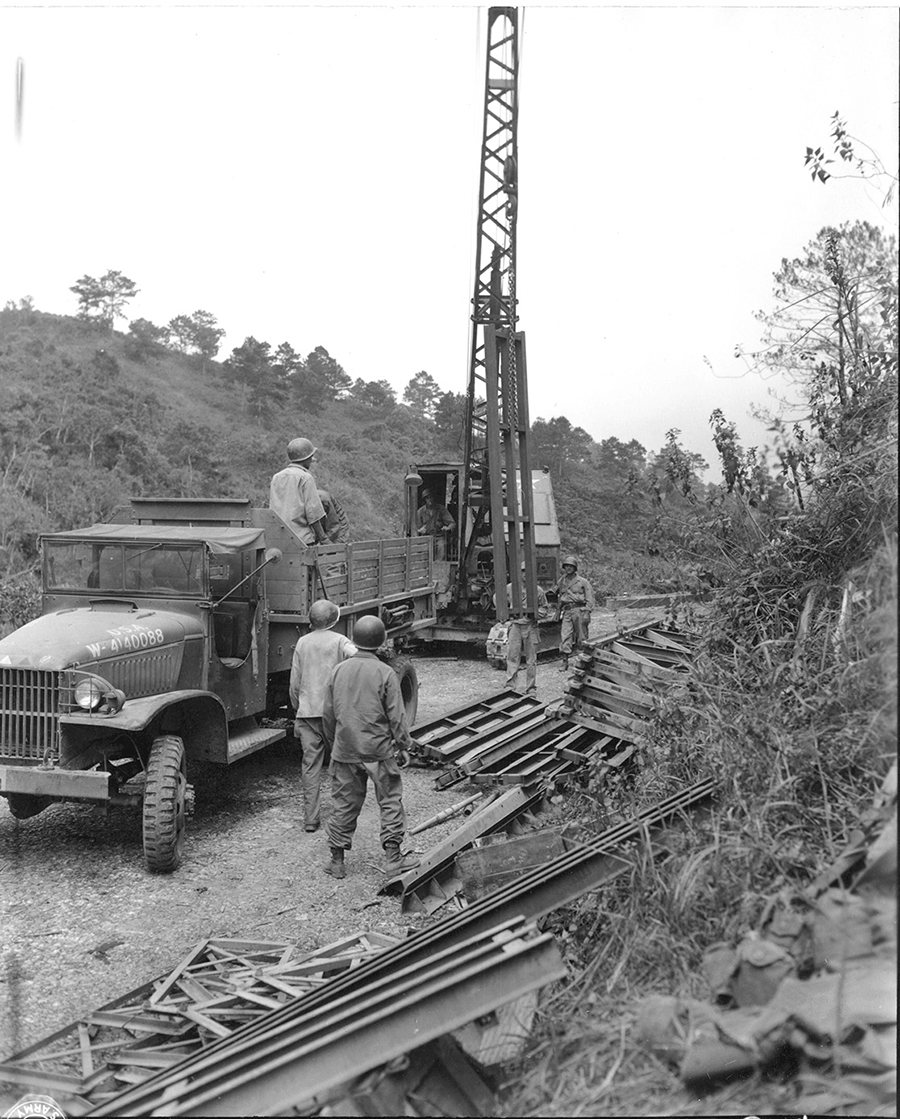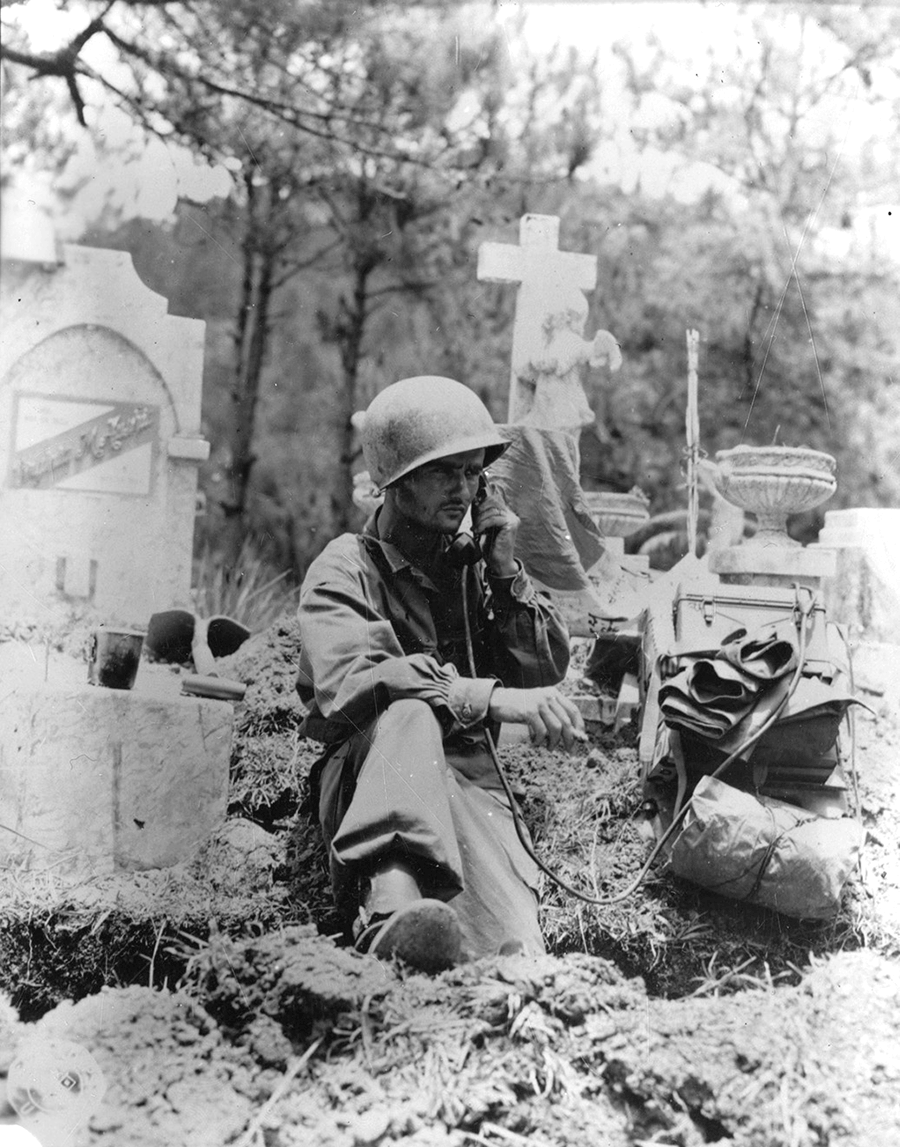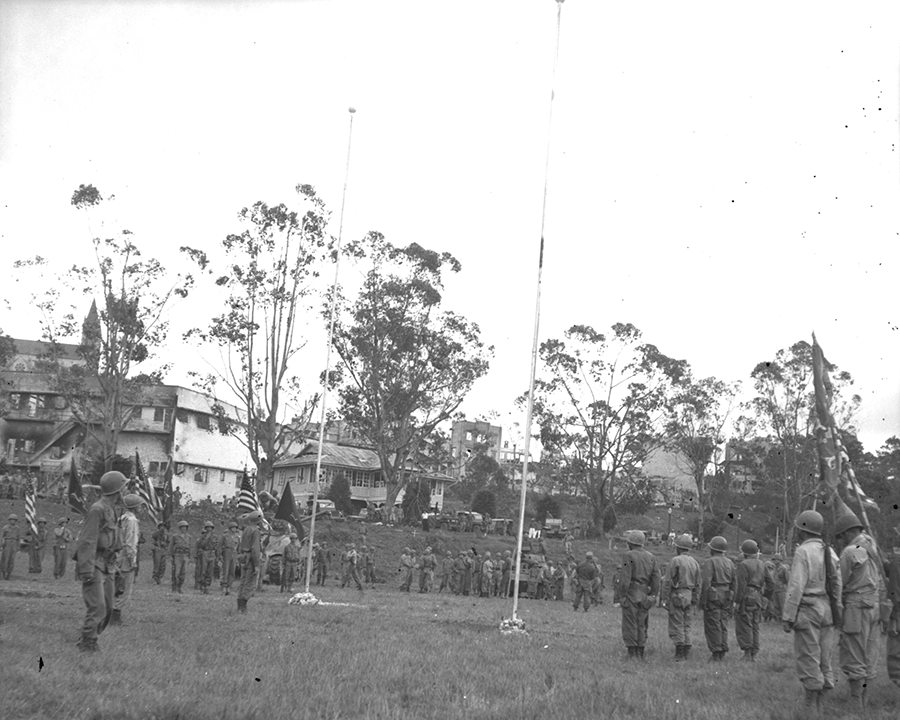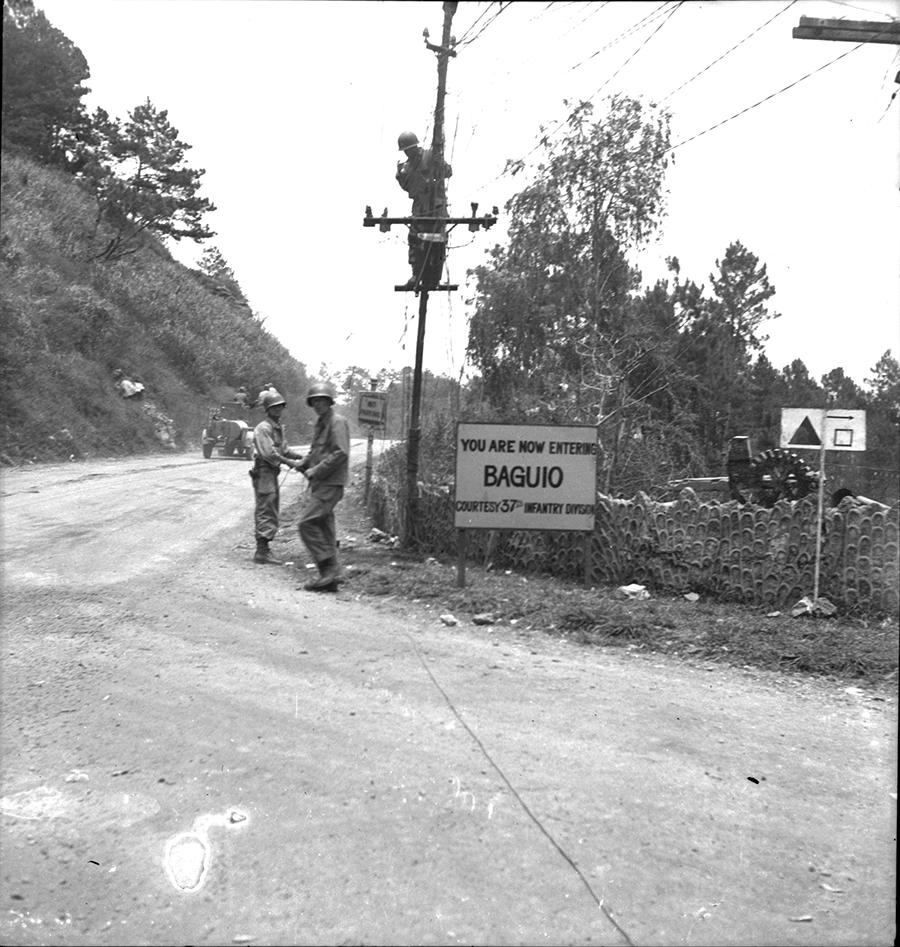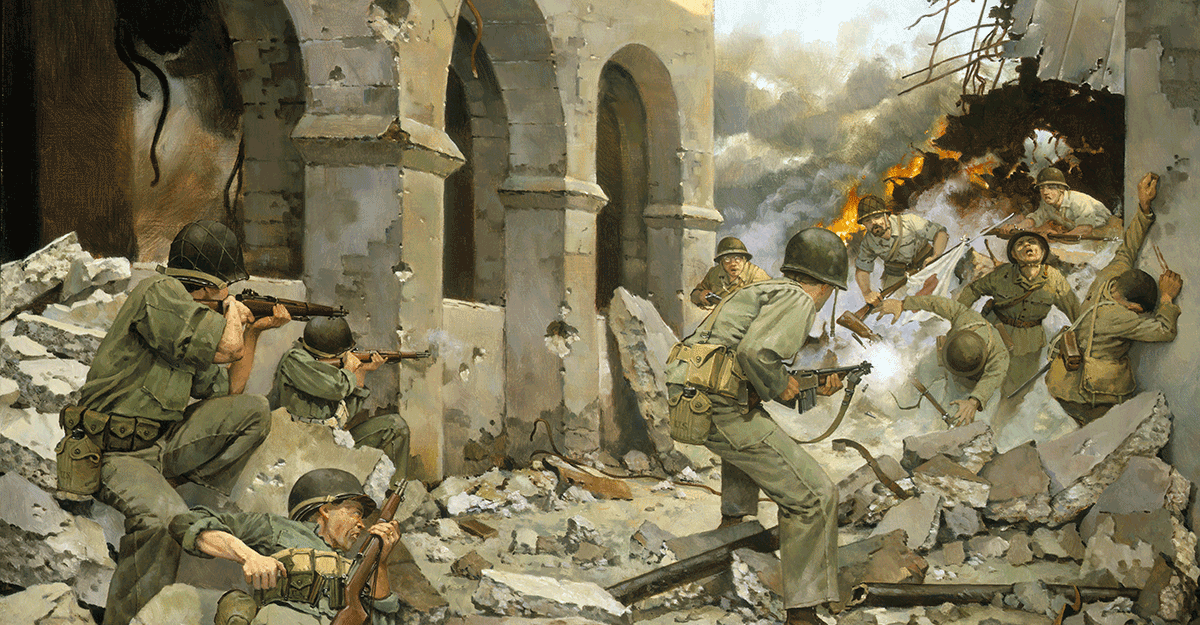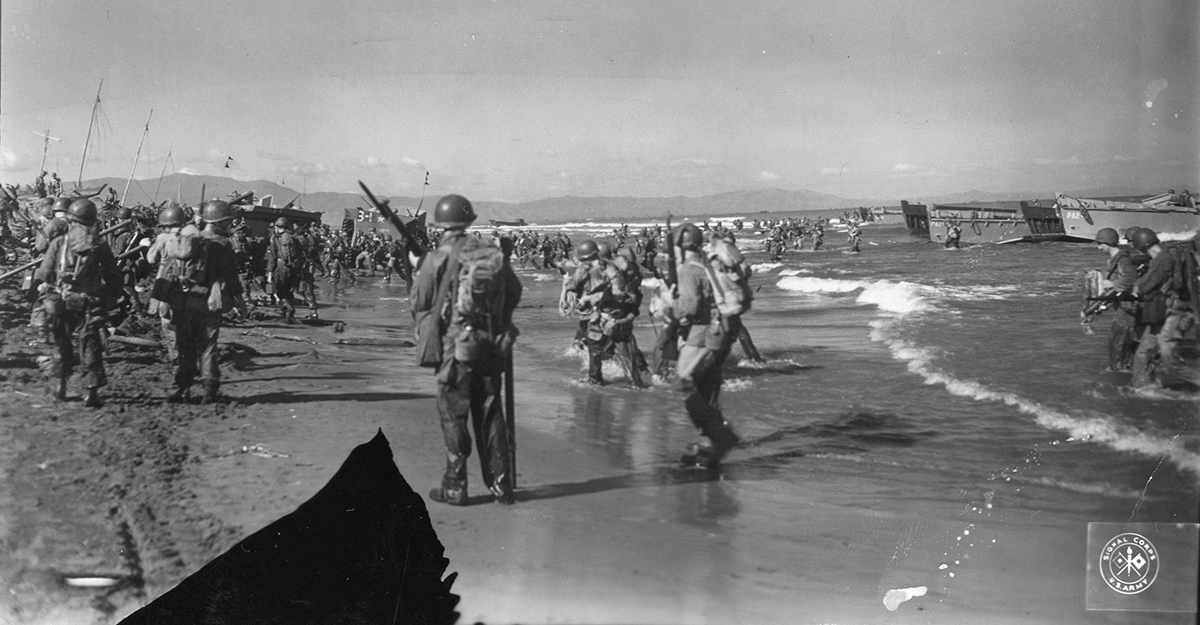‘You are now entering Baguio, Courtesy 37th Infantry Division’: Marking the 75th anniversary of the liberation of Baguio
Story by Sgt. 1st Class Joshua Mann, Ohio Army National Guard Historian
(04/24/20)
The Soldiers of the 37th Infantry Division thought they had seen it all since arriving in the Pacific in 1942. From the thick, dense jungles of New Georgia and Bougainville to the vicious, deadly street fighting in Manila. But in April 1945, a new challenge was served to the Buckeye Division, a massive mountain range in the north central part of Luzon — the Cordillera Central.
“To us, the Cordillera Central was “them damned mountains,” recalled Charles Henne of the 148th Infantry. “The first sight of them was intimidating. On the slopes we learned the half-step, the only way you could climb and descend standing, not crawling on your hands and knees.”
In the tropical pine forest region of the mountains was the Philippine summer capital city of Baguio. Here, the Japanese commanders set an elaborate, in-depth defense in the mountainous, rugged terrain, which they hoped would negate the American industrial supremacy of materiel and firepower.
The 37th, on occupation duty in Manila, entered the fight piecemeal. On March 29, the 129th Infantry and 6th Field Artillery Battalion were attached to the 33rd Infantry Division and moved by train and boat to the area. Attacking from the west, the drive to Baguio was relegated to narrow mountain roads with sheer cliffs and deadly drop-offs. Enemy resistance was spotty at first.
“We all thought this was just routine and that the Japanese had turned tail and run away when they saw us coming,” recalled a 129th Infantry Soldier. Suddenly the honeymoon ended when enemy resistance stiffened. On April 9, the balance of the division arrived, with the exception of the 145th Infantry, which was attached to the 6th Infantry Division at Mount Pacawagan.
“It was a series of tough, sharp engagements,” wrote Maj. Gen. Robert S. Beightler, commanding general of the 37th Infantry Division, after the war. “Every turn in the ascending corkscrew road was a potential ambush. We had to attack frontally, and to keep hammering frontally.”
On April 14, the 148th Infantry passed through the 129th and took the vanguard along Highway 9. Three days later, the regiment halted near the Irisan Gorge when an American tank had slid off the road. The regimental commander, Col. Lawrence White, had moved to the front to scout the area when a Japanese tank roared around a curve and started to fire. In the hail of gunfire, White was hit and rolled off the road toward the downed tank. When he stopped 30 feet down the hill, to his surprise, there was the regiment’s Catholic chaplain, Capt. Elmer Heindl.
“Father Heindl, what are you doing here?!” exclaimed White.
“I don’t know, but it sure is God’s providence,” responded Heindl.
The chaplain applied a lifesaving tourniquet and gave White a shot of morphine. He returned to the American lines for help and White was soon evacuated. For the next four days, his regiment zig-zagged up and down the eight hills that made up the defense near Irisan, reducing the final line of Japanese resistance.
On April 22, the 129th resumed the lead of the advance to Baguio. Four days later, on April 26, Company G reached a cathedral in the city, where 3,000 civilians assembled in the churchyard to greet them. The final days of April were spent clearing out the final enemy forces north of the city.
“I hate that kind of war — it’s the slowest and most expensive kind,” Beightler said. “But we made it. We got to Baguio — and we got there first.”
Upon entering the city from the southwest on April 29, the 33rd Infantry Division was greeted with a sign that read: “You are now entering Baguio, Courtesy 37th Infantry Division.”
